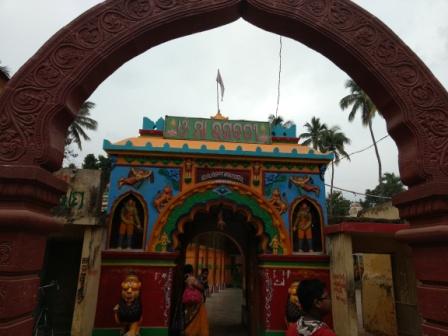BHUBANESWAR: A sixth century AD shrine, has taken its rightful place in the realm of archaeology with its relisting in Odisha State Archaeology recently.
The town was the capital of the Sailodbhaba dynasty (6th-8th century AD). A large number of Buddhist images discovered at Banapur and nearby at Achutrajpur relates the place to the Vajrayana cult of Buddhism. As per historical importance, it was one of the centres of inception of Paik rebellion. Noted poet and socialist Godabarish Mishra was born here too. In fact, the town has a special place in Archeology due to the temple’s architecture.
During GuptaNavratri Puja, popular deity Banapur Baghabati blesses its devotees with special powers. Legend has it that Bhagabati was the tutelary deity of demon King Banasura. Hence, the town’s name is influenced by him. He was defeated by Lord Krishna.
An epigraphically important record of Sailodbhavas sheds light on the ‘Sakta pitha’ of Odisha. It is the Banapur copper plate grant of Dharmaraja Srimanabhita making endowments for the presiding deity Bhagabati. Banapur is one of the twelve shakti pithas of Odisha as mentioned by Sarala Dasa in his Sarala Mahabharata in Odia.
Maa Bhagabati temple is the major point of attraction in the entire Banapur area. The present ‘Vimana’ and its ‘Jagamohana’ are built in ‘Pidha’ order and thickly plastered with lime mortar. It is said to be constructed by the Gajapati Maharaja of Puri and the new pillared ‘Mandapa’ has been added to the front of ‘Jagamohana’ for convenience of the devotees. The niches of inner walls of the compound contain loose sculptures of Ganesha, Kartikeya and Parbati (by the name Bhubaneswari) and Chamunda.
An image of Asta-bhuja (eight armed) Mahisamardini Durga, locally known as Maa Bhagabati is worshiped in the sanctum of the main temple. Of the eight hands, four of the right ones contain weapons like sword, spear, short dagger, and arrow and the hands on the left side hold shield, bow, conch and disc. The chopped off head of the buffalo demon lies on a lotus pedestal. A separate shrine has been constructed in front of the ‘Jagamohana’ for worshipping Goddess Polakasuni with another image of Chamunda kept near it.
A good number of festivals are observed round the year namely Chandan Yatra, Sabitri Amabasya, Sitala Sasti, Chitalagi Amabasya and Durga Puja among others. Dussehra is the most important festival at Banapur. Animal sacrifice was practiced on the astami day, but it has been discontinued in recent years by a court order. One of the most famous festivals here is Panchu Dola, during which 72 gods and goddess of nearby villages gather in a large ground called ‘Melana Padia’.
Banapur was once an important centre of Shaivism, Shaktism and Buddhism. The temple has special links with the royal family of Puri. Lord Jagganath was once housed in Bankadagada fort at Banpur for 30 years to avoid Islamic invaders. Here, at the right side of the entry, there is a small Lord Jagannath temple. Inside the main gate, there is the idol of Patitapabana idol. Bhagabati’s paternal house Dakhya Prajapati temple is said to be the home to Daksheswar. The temple is well-known for its architectural excellence.
Banapur is also famous for its cane furniture and handicrafts. Previously, raw material was available from nearby jungles. However, now it’s being arranged from Assam. The town is in located in the middle of scenic and sublime surroundings.
